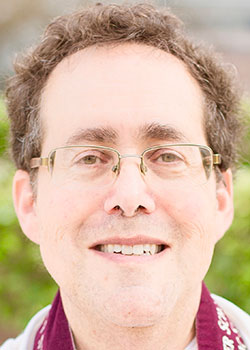Every February, Americans send each other cards with fat little winged kids and big red hearts. The kids flutter around, shooting silly looking arrows, while the cards often float on boxes of chocolates or bouquets of flowers. Valentine's Day is not only an annual celebration of romance, it's also a big industry, "when you care enough to spend the very best."
Where did the idea of chubby boys with wings come from, and why is that a symbol of love? One source is the idea of Cupid, the mythical son of the Roman Venus, whose arrows caused instant passionate love to burn in the heart of the target. The hunger that Cupid implanted produced a heartburn that never went away.
Not so the Jewish notion of a cherub. The Torah, and the rest of Hebrew Scriptures, mentions the cherubim several times. Their most prominent role occurs in this week's parshah, where the Torah relates God's instruction to make two cherubim of gold -- make them of hammered work -- at the two ends of the cover . . . The cherubim shall have their wings spread out above, shielding the cover with their wings . . .There I will meet with you . . . from between the two cherubim that are on top of the Ark of the Pact.
What were these statues doing in the middle of biblical religion? And why were they in the most awesome of all possible places, right in the Holy of Holies, just above the Ark of the Covenant? Didn't the Ten Commandments prohibit fashioning any image of anything in the heavens or on earth? In fact, the cherubim were common throughout the Ancient Near East.
The Akkadian word 'kuribu,' originally meaning "to pray," was used to describe creatures which were part human, part beast, and part bird. At pagan temples, statues and portraits of these cherubim would guard the entrance and petition the deities on behalf of the worshipers.
The image of the cherubim troubled medieval sages as well. Rashi (11th Century France), interested in the mechanics of their involvement, explained that "a voice descended from the heavens between the cherubim, and from there issued and was heard by Moses in the Tent of Meeting." For Rashi, these images were a tool of focusing, helping Moses to recognize the Divine source of his instructions from God.
Rashbam (12th Century France) was more interested in a psychological facet, recalling the words of the Talmud that these cherubs had faces like children (ke-rabbiya). Perhaps his comment is that because they are so close to God -- "cherub" is related to the Hebrew word for close -- they symbolize a purity, goodness and trust of the world found primarily in young children.
Most insightful, however, is the remark of Hizkuni (13th Century France) that the reason the cherubim are permissible, even though they appear to violate the prohibition against statues, is that they are not made to be worshipped, but rather to symbolize God's invisible Glorious Throne. The cherubim point to a higher truth -- the invisibility of the God of Israel.
Showing the base of the throne highlights that one cannot portray the throne itself, much less the God whose presence fills it. The physical image of the cherub, then, draws our attention to the lack of an image for God. Why does the God of Israel have no image? To portray is to limit, to encompass and to understand. That path leads to the trap of excessive intellect, of human arrogance, to the mistaken idea that expertise or knowledge can replace faithfulness or goodness.
God is, as always, 'ain sof,' without limit. Less interested in being understood, God passionately seeks commitment, being and involvement. Prayer, in the Tabernacle of old or in the synagogue of the present, is less a recital of words, or an exercise in self-expression than it is a response of wonder, gratitude and love. Not on the heart of Cupid, but in the heart of humanity -- that is where God, and love, dwell -- invisible, and for all.
Shabbat Shalom.

